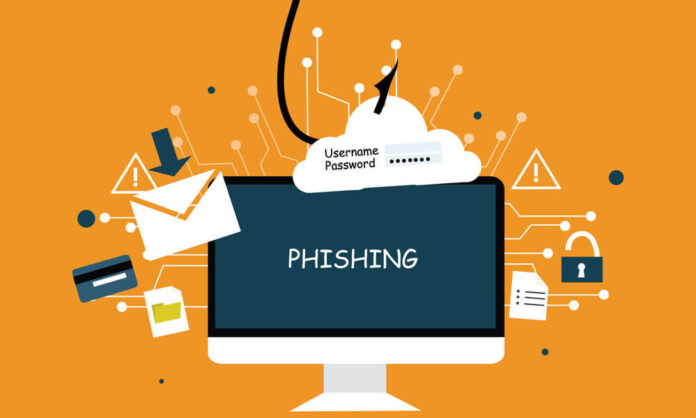A secure email gateway, an SEG, is critical to your business’s security infrastructure. It scans incoming emails for malware, ransomware, and phishing threats before they enter your network.
It can be a physical device or a program inside your company’s server. It scans every message and determines whether it should be filtered or forwarded to its intended recipient.
External Encryption
If you use a USB drive or other external device that contains sensitive information, it’s essential to encrypt your data so that you can protect it from theft. Several tools are available to encrypt your data which works with any hard drive or USB dongle.
Another way to prevent phishing attacks is using two-factor authentication, which requires providing a code to access your email account. This feature is available with most email platforms and can be used to prevent hackers from gaining access to your account.
Phishing emails typically arrive in your inbox and are aimed at stealing personal information, such as passwords, money, or access to systems. Spammers send these malicious messages, including links that lead to malicious websites or download malware.
One of the most common types of phishing is man-in-the-middle (MitM) attacks, which involve sending an email that appears to be from a trusted sender. The message then redirects the recipient to a phishing website, which is the target site and looks authentic.
For this reason, DMARC (Domain-based Message Authentication, Reporting & Conformance) is an effective tool for preventing phishing attacks, as it compares incoming emails against a database of senders and reports back to security administrators. However, the technology must be foolproof and cannot prevent all phishing attacks.
Spam Filtering
A spam filter is a software routine that deletes incoming spam or diverts it to a “junk” mailbox (see below). It may be built into a user’s email program or installed onto a mail server.
Spam filters often have rules designed to judge incoming emails on specific criteria and determine whether they are safe to receive. The laws protect the user from receiving dangerous emails containing viruses, spyware, phishing links, and other hazardous material.
Some spam filters also analyze email headers to determine whether they come from legitimate sources, such as IP addresses recognized by email service providers. They also look for data indicating that an email was part of an extensive, multi-email campaign sent to preselected recipients.
Another essential feature of a spam filter is the ability to report emails that appear fraudulent in their content. This helps to catch similar phishing attacks in the future.
In addition, some spam filters have reputation-based email filtering capabilities. These allow trusted senders to be approved by adding them to a list of known and safe senders.
These reputation-based blocking or approving senders are more advanced than the traditional anti-spam measures, including keyword and phrase detection. They use behavioral data and machine learning to evaluate a message’s inboxworthiness based on the recipient’s email preferences.
Phishing Prevention
Secure email security gateways play a vital role in preventing phishing attacks. It scans inbound emails, examining their contents and attachments for malicious content. If an inbound email is safe, it will pass on to the user’s mailbox. If it is negative, however, it will quarantine or block the email for further inspection by the system administrator.
Several specialized anti-phishing software programs in the market can handle zero-day vulnerabilities, identify and neutralize malware attachments, spot man-in-the-middle attacks, detect spear phishing emails, and more. These are often paired with rigorous user education programs that help users identify fraudulent emails and handle them appropriately.
Another phishing prevention technique is not giving out sensitive information on sites that do not employ SSL technology, which ensures safe, encrypted data transmission over the internet. This is especially important in highly regulated industries such as healthcare, financial services, and other sensitive sectors.
To protect against these kinds of phishing attacks, organizations must implement layered mitigations covering every aspect of their security strategy. This approach is essential in minimizing the time, resources, and money spent defending against phishing attacks.
To effectively prevent phishing attacks, organizations need to train their employees on security awareness and implement robust authentication protocols that eliminate employees’ need to enter passwords manually. Employees should also be encouraged to use a minimum of two-factor authentication for any online transactions that require their passwords and should be required to update their passwords regularly.
Reporting
Email is the most common means of communication for most organizations, yet it is also one of the simplest methods hackers use to breach networks, steal data, and corrupt reputations. The tactics and techniques used by cybercriminals to attack email are evolving rapidly, so it is essential to have a secure email gateway in place.
A secure email gateway protects emails from malicious content by placing them into quarantines or blocking them. This significantly decreases the number of successful compromises of user credentials, email hosts, and sensitive company data.
Typically, a secure email gateway scans all inbound and outbound messages before they enter the business network. It then sanitizes and analyzes them to determine whether they contain malware or fraudulent content. If the SEG finds something suspicious, it will quarantine or block it so system administrators can review and investigate it.
It is important to note that the SEG should be constantly updated with threat intelligence information to prevent the latest malware payloads. Ideally, this should happen on an automatic basis.
Another crucial part of preventing phishing attacks is reporting. These reports are critical as they allow organizations to understand how well their SEG works, enabling them to create a quarantine rule for specific keywords or senders.
In addition to preventing phishing attacks, a secure email gateway can protect against other common email-borne threats like viruses and spam. Detecting and mitigating these threats is crucial for any organization as they can significantly impact productivity and security.












